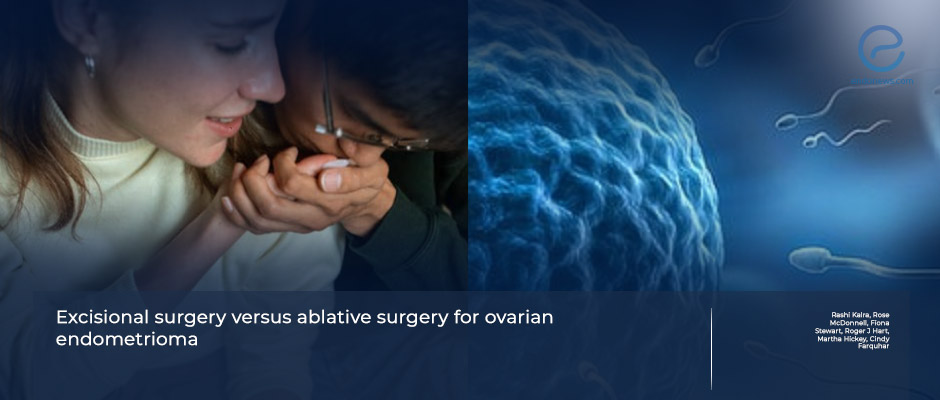Excisional vs Ablative Surgery for Ovarian Endometriomas: Fertility and Recurrence Rates
Jan 17, 2025
Excisional Surgery Outperforms Ablation and Drainage for Endometrioma Pain and Recurrence
Key Points
Importance:
- The choice between excisional surgery (cystectomy) and ablation may impact patient outcomes, although individual patient parameters play a significant role.
- While previous evidence suggested that laparoscopic excision is superior to ablation and drainage, updated data is necessary to confirm and expand on these findings
Highlights:
- Excisional surgery reduces the recurrence risk of endometriomas, dysmenorrhea, and dyspareunia compared to ablation, with benefits lasting up to two years post-surgery.
- Excision may not significantly improve spontaneous pregnancy rates compared to ablation, highlighting the need for further research.
What's done here:
- This Cochrane review by Kalra R. et al. examines the optimal surgical approach for managing endometriomas, focusing on excision (cystectomy) versus ablation+drainage.
- Comprehensive database searches were conducted across Medline, Embase Ovid, Cochrane Central Register of Controlled Trials, PsycINFO Ovid, and CINAHL EBSCO, covering all published records to date.
- The review aimed to reassess the evidence for excisional surgery's superiority over ablation and drainage in improving pain and fertility-related outcomes.
Key Results:
- Of 2,152 records screened, 9 studies were included for qualitative analysis, and 8 for quantitative synthesis (meta-analyses).
- A total of 578 women underwent laparoscopic treatment for endometriomas via excision or ablation.
- Recurrence rates of dysmenorrhea and dyspareunia were significantly lower after excisional surgery (up to 34% and 23%, respectively) compared to ablative surgery (49% and 58%).
- Endometrioma recurrence was reported in 37% of women after ablative surgery, compared to 5%–17% after excisional surgery.
Lay Summary
Endometriomas are typically treated surgically with either cystectomy or ablation and drainage. Laparoscopic surgery offers benefits such as shorter hospital stays, quicker recovery, and reduced healthcare costs. Many women undergo endometrioma surgery prior to fertility treatments or to enhance their chances of natural conception.
After 12 months of follow-up, excisional surgery significantly reduced the recurrence of endometriomas, dysmenorrhea, and dyspareunia compared to ablation. However, longer follow-up studies may show an increased risk over time due to the progressive nature of the disease.
Research Source: https://pubmed.ncbi.nlm.nih.gov/39588841/
excisional surgery ablative surgery laparoscopic excision drainage of endometrioma cystectomy endometriosis.

